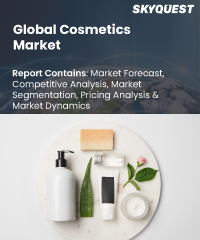
Report ID: SQMIG30L2220

Report ID:
SQMIG30L2220 |
Region:
Global |
Published Date: February, 2024
Pages:
165
|
Tables:
94 |
Figures:
78
Cosmetics Market size was valued at USD 251.73 billion in 2019 and is poised to grow from USD 262.21 billion in 2023 to USD 363.8 billion by 2031, growing at a CAGR of 4.2% in the forecast period (2024-2031).
Cosmetics have become an essential part of an individual’s life as they not only enhance one’s external appearance but are directly linked with the grooming of the overall personality and confidence. The emphasis on taking care of skin, hair, and overall external grooming along with an individual’s awareness has been some of the major drivers of the Global Cosmetics Market. Increased awareness of major important ingredients like vitamin C, retinol, hyaluronic acid, etc. along with the launches and development of innovative formulations like anti-aging products, eye creams, serums, sunscreens, and hair color, etc has been instrumental in the growth of the cosmetics market. The emphasis of the manufacturers on the packaging of the product according to the utility and convenience has also been an added attraction for customers. For instance, specialized pumps for facewash are used as a brush to give a massage-like experience while washing the face or roll-on eye creams.
Moreover, social media platforms have given brands increased visibility and recognition which has further propelled the cosmetics market growth. There has been a significant rise in the use of natural products or products with natural ingredients in them as a result of consumers’ inclination towards natural products which have minimum harm to the skin and the environment. Additionally, the growth in the organic products market is projected to give an additional boost to the overall cosmetics market. This has compelled mainstream manufacturers to launch natural variants of their products in the market. The rising skin care and hair care awareness among men and increased purchasing power among women are regarded as the substantial factors contributing to the increased demand for cosmetic products.
US Cosmetics Market is poised to grow at a sustainable CAGR for the next forecast year.
Our industry expert will work with you to provide you with customized data in a short amount of time.
REQUEST FREE CUSTOMIZATIONWant to customize this report? This report can be personalized according to your needs. Our analysts and industry experts will work directly with you to understand your requirements and provide you with customized data in a short amount of time. We offer $1000 worth of FREE customization at the time of purchase.

Report ID: SQMIG30L2220